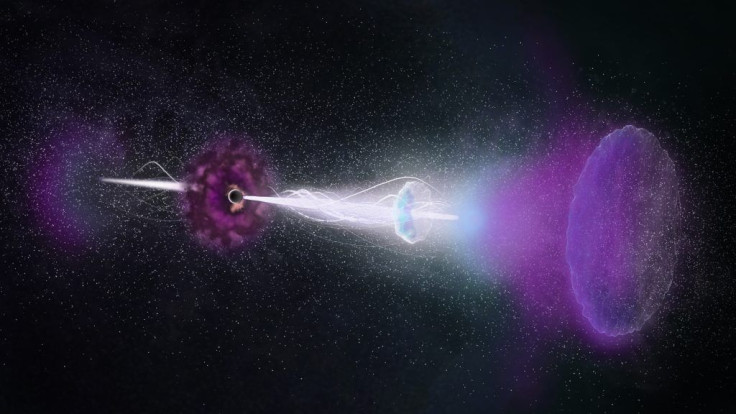Violent Star Explosion 2 Billion Light-Years Away Reveals Long-Lasting Reverse Shockwave

Back in December 2016, astronomers detected a powerful gamma-ray burst (GRB) from a violent cosmic explosion.
The rays, which lasted for a short seven seconds, came from the gravitational collapse of a massive star some 2 billion light-years away from Earth. The stellar body had exploded to form a black hole at its center. However, the detection of GRBs from that void allowed astronomers to take follow-up observations and witness the aftermath of the explosion.
Essentially, when the team zeroed in on the source of the event, known as GRB 161219B, longer wavelengths of light, including X-ray, radio, and visible light, continued to appear. The phenomenon lasted for weeks, enabling the team to use observatories in different parts of the world and study the afterglow of the explosion — and the powerful jets its gamma-ray burst created.

Typically, when a gamma-ray burst occurs, its jets blast stellar material into the surrounding medium such as gas and dust. This encounter slows down the material and sends a shockwave echoing back through the jets in the form of a rebound or reverse shock.
Till date, scientists thought that the reverse shockwave was a relatively short-lived event, lasting only for a few seconds, much like the jets from a GRB. However, the latest observations of GRB 161219B revealed a reverse shock that lasted much longer than originally thought.
“With our current understanding of GRBs, we would normally expect a reverse shock to last only a few seconds,” Tanmoy Laskar, the lead researcher behind the work, said in a statement. “This one lasted a good portion of an entire day."
The team created a time-lapse showcasing the afterglow of the gamma-ray burst. They described the effect of its reverse shock as illuminating the interior of an explosion with a powerful light bulb.
“For decades, astronomers thought this reverse shock would produce a bright flash of visible light, which has so far been really hard to find despite careful searches,” Laskar added in the statement. However, the precise measurements taken by different observatories, particularly Atacama Large Millimeter/submillimeter Array, revealed that its light shines most brightly at millimeter length wavelengths for about a day.
Meanwhile, the visible and X-ray light observed in the work resulted from the blast wave that moved ahead of the jet.
“What was unique about this event is that as the reverse shock entered the jet, it slowly but continuously transferred the jet’s energy into the forward-moving blast wave, causing the X-ray and visible light to fade much slower than expected,” the researcher stated, noting that the reverse shock emission faded within a week, leaving the blast wave to shine brightly, even in the millimeter wavelength.
Observations like these focusing on the properties of GRBs are crucial for understanding the energy emitted from these events. In the case of GRB 161219B, the researchers found that the jets emitted as much energy as the sun would put out in a billion years.
The study, titled "First ALMA Light Curve Constrains Refreshed Reverse Shocks and Jet Magnetization in GRB 161219B," was published in the Astrophysical Journal on July 26.
© Copyright IBTimes 2024. All rights reserved.




















